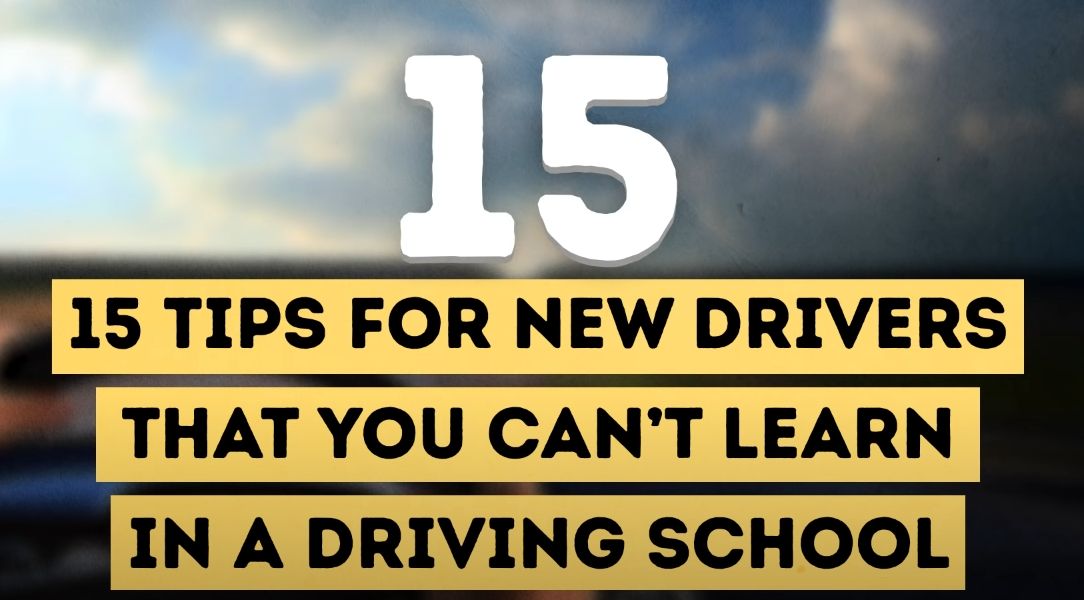Fifteen Essential Tips for New Drivers
Learning to drive is a significant milestone, but there are crucial aspects of driving that go beyond what traditional driving schools cover. Even experienced drivers may not be aware of certain nuances that can make driving safer and more comfortable. In this article, we’ll share fifteen tips that every new driver should know, covering everything from eliminating blind spots to handling challenging weather conditions.
1. Get to Know Your Vehicle
Before hitting the road, take the time to familiarize yourself with your vehicle. Knowing the location of switches for fog lights, hazard lights, and other controls can save you stress and potential trouble, especially if you’re pulled over by the police.
2. Adjust Your Mirrors Correctly
Properly adjusted mirrors are crucial for eliminating blind spots. Ensure that your side-view mirrors are positioned to eliminate blind spots, and adjust your rearview mirror to provide a clear view of the back window while maintaining your normal driving position.
3. Avoid Driving in Someone Else’s Blind Spot
While you may diligently check your blind spot, not all drivers do. Be cautious when driving alongside another vehicle, especially if you’re in their blind spot. Either speed up to be alongside or get in front of them, or slow down and drop back to ensure they can see you in their mirrors.
4. Learn to Feel Where the Wheels Are
Develop a sense of where your wheels are to navigate potholes and obstacles effectively. Practice by driving over an empty plastic bottle with your left and right front wheels, listening for the sound. With enough practice, you’ll become more adept at feeling your vehicle’s movements.
5. Park Guided by Windows and Mirrors
Parallel parking can be challenging, but two essential tips can make it easier. When perpendicular parking, stop when you see the curb in your side mirror. For parallel parking, use colored duct tape to mark when to stop, ensuring you won’t scratch the hubcaps.
6. Learn to Drive in Bad Weather
Driving in adverse weather conditions is a skill every driver should master. Practice in a controlled environment to understand how your vehicle behaves in rain, snow, or icy conditions. This preparation will make you more confident when facing challenging weather on the road.
7. Dry Your Brakes After Driving Through a Puddle
After driving through a puddle, slow down and go through it smoothly without changing speed. Press the brake pedal a few times to dry the brakes, preventing potential issues like aquaplaning.
8. Watch Out for Taller Vehicles
Be attentive to the maneuvers of taller vehicles, such as trucks and buses. If they suddenly change lanes, it could indicate an obstacle or accident ahead. Following their lead might help you avoid potential roadblocks.
9. If the Car Doesn’t Start, Turn on the High Beams
In cold weather, a car may not start on the first try. Before panicking or seeking assistance, try turning on the high beams, radio, or indicator to keep the car battery warm.
10. Lower Your Rearview Mirror at Night
Switch your rearview mirror to night mode to avoid being blinded by headlights behind you. This adjustment can significantly improve your visibility during nighttime driving.
11. Turn On the Air Conditioner Regularly
Even if you don’t need air conditioning, turn it on occasionally to prevent the coolant from seeping out and keep the tubes from drying up, especially in colder months.
12. Use the Handbrake Regularly
Using the handbrake regularly, even in non-angle parking situations, helps maintain its functionality. However, avoid using it in very cold weather to prevent brake pads from freezing.
13. Follow Other Drivers’ Cues
If a car in the neighboring lane is slowing down, consider following suit. Sometimes, other drivers may react to unpredictable situations like pedestrians or animals on the road.
14. Don’t Let the Illusion of Low Speed Deceive You
On straight roads, the speed may appear lower than it actually is. Resist the urge to speed up, as this illusion can lead to driving too fast for turns. Stay at a safe and reasonable speed.
15. Don’t Turn the Wheels Beforehand When Making a Left Turn
When making a left turn, avoid turning the wheels in advance. In the event of a rear-end collision, having the wheels in the initial position reduces the risk of being thrown into oncoming traffic.
By incorporating these fifteen tips into your driving habits, you’ll not only enhance your safety on the road but also become a more confident and skilled driver. Drive safely, and share these tips with fellow drivers to contribute to a safer driving experience for everyone. If you found this article helpful, let us know by giving it a thumbs up, and stay tuned for more driving secrets.


(1) Comment